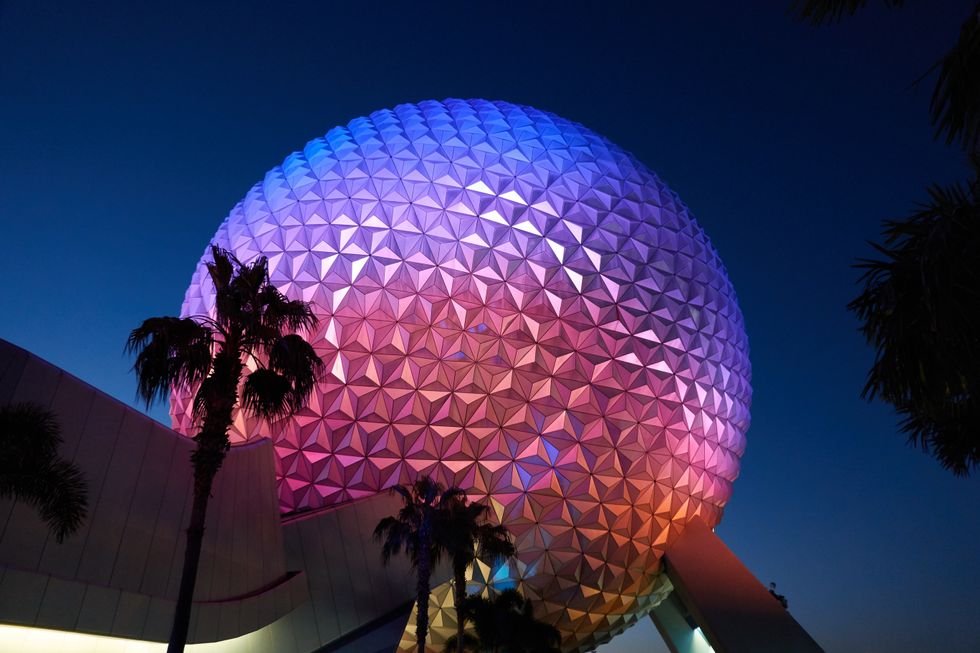In this second installment, we will be looking at EPCOT. EPCOT stands for Experimental Prototype Community of Tommorrow, and it was the second park to open at Disney World in 1982. Walt Disney meant for the park to be a community where people would live, work, and play, a utopia of sorts. The plan, however, was scrapped after he died, and instead the park was made into a place that celebrates the innovations of today and the future and the countries of the world, a place that I think Disney would be proud of. While EPCOT may focus on the real world instead of fantasy, it is no less magical.
1. The roofs in Norway
The Disney Imagineers took great care to make sure all the countries in the World Showcase looked authentic. In Norway, the roofs are made of turf just like the houses in the actual country. Turf grass roofs are traditionally used on houses in Norway because they are sturdy and provide good insulation, but while Norwegians let their roofs grow wild, Disney's are hand trimmed by the gardeners.
2. The walkways in China
The walkways in China are more narrow than in the other countries in the World Showcase. They are meant to cram people together to simulate the crowded streets and roads in China.
3. The Morocco Pavilion
The Morocco Pavilion is the only one that is sponsored by the country that it represents. The King of Morocco sent his own craftsmen to construct the pavilion and do all the tile work. Each one of the mosaics is flawed in order to conform to their religious beliefs, and there is no lighting on the religious themed buildings during the nighttime shows also to conform to religious customs. The craftsmen return every year to perform maintenance on the pavilion.
Bonus Fact: The back of the Hollywood Tower of Terror in Hollywood Studios can be seen from the pavilion and it was decorated to fit the other buildings in Morocco.
4. The Strait of Gibraltar
In between Morocco and France the pavement is a different color to represent the Strait of Gibraltar which flows between the two countries. The pavement is even shaped like the body of water.
Bonus Fact: When going from France to the United Kingdom, the shape of the waterway under the bridge is meant to represent the English Channel which actually separates the two countries.
5. Miles and miles of bratwurst
One of the specialty dishes at the Biergarten restaurant in the Germany pavilion is bratwurst. They sell so much of it that every 60 days they serve enough bratwurst to stretch 26.2 miles, the length of a marathon.
6. The tank at the Seas with Nemo and Friends
Before it became Nemo and Friends, the attraction was know as the Living Seas, and was an aquarium. The aquarium is so large the entire Spaceship Earth (the giant ball) can fit inside it. While the aquarium still houses fish, the Imagineers added projections of the characters from Finding Nemo so that they look as if they are swimming around with the fish as the visitors ride by in clam shells.
7. Spaceship Earth
Speaking of Spaceship Earth, a person can stand under it while it is raining and not get wet. The huge sphere has an intricate drainage system built into it, and the rain runs into EPCOT's lagoon.
Bonus Fact: The sphere weighs 16 million pounds, is 165 feet in diameter and encompasses 22 million cubit feet of space. The outside is made of 11,324 plastic-alloy and aluminum triangles
8. Living With the Land
The Living With the Land attraction, which showcases innovations in gardening, is home to the Guinness World Record for the most tomatoes grown from a single tomato plant in one year. The plant grew 1,151.84 pounds of tomatoes. That's about 32,000 tomatoes.
Bonus Fact: They also grow tomatoes shaped like Mickey Mouse's head.
9. Test Track
Test Track is longer and faster than any other ride at all of the Disney theme parks. It's 4,286 feet long, and it reaches speeds up to 65 mph.
10. Mission: Space
For Mission: Space, one of the most popular rides at EPCOT, it took 650 Imagineers 350,000 hours, which is the equivalent of 40 years, to develop the ride over a five year period. They also consulted NASA astronauts and engineers on the centrifugal motion simulator so that guests would truly be able to experience what a flight to space would feel like.





















